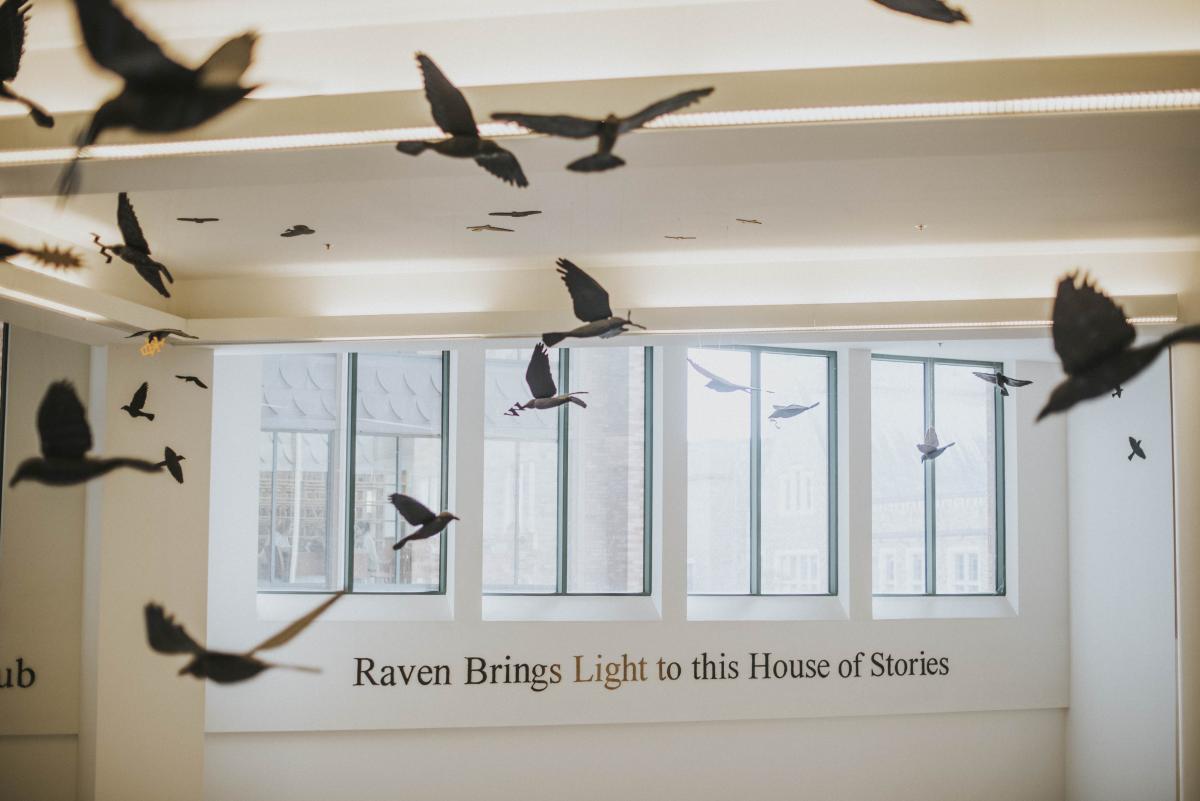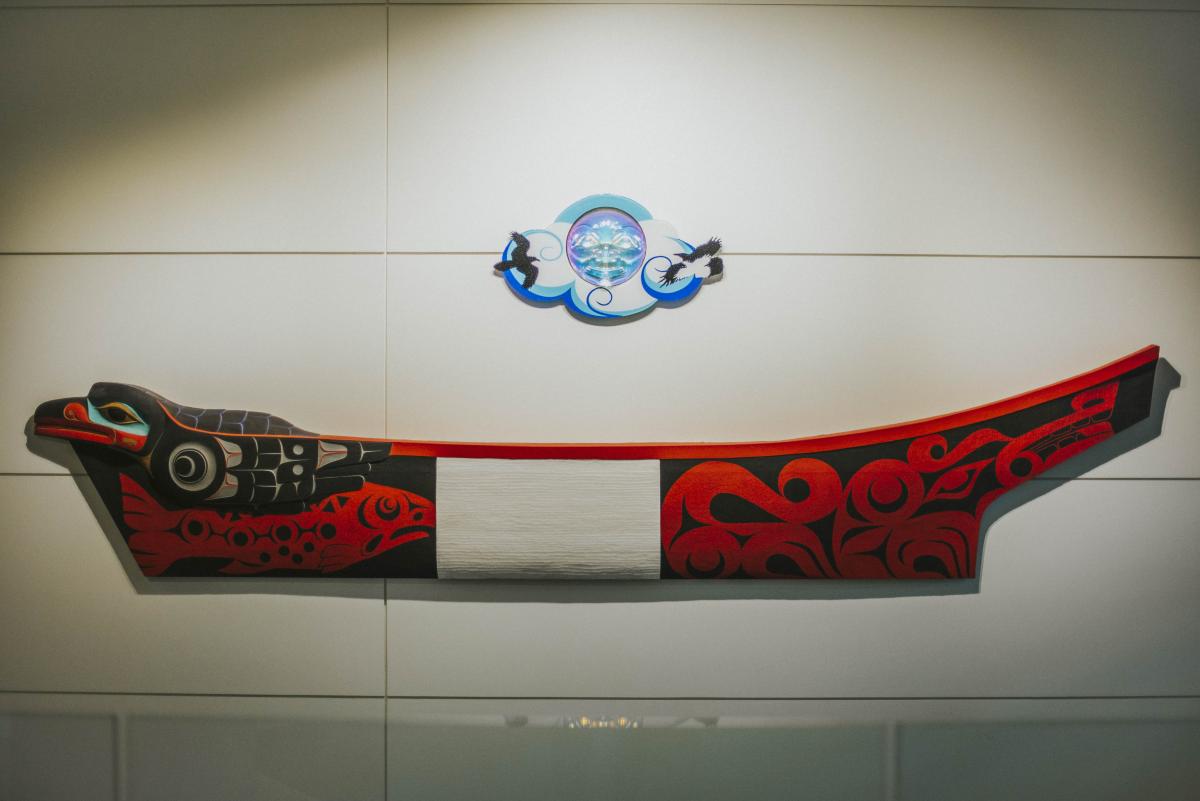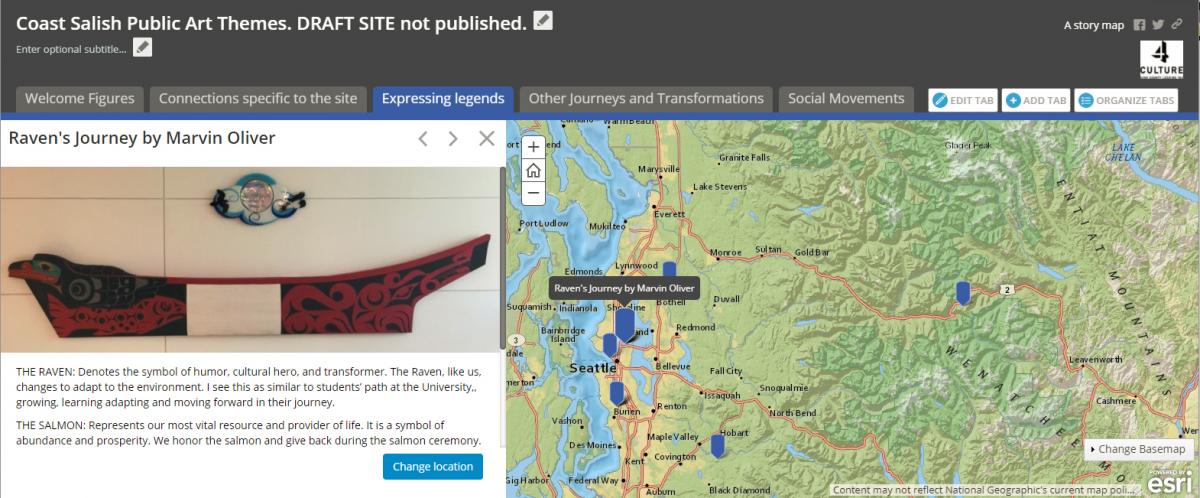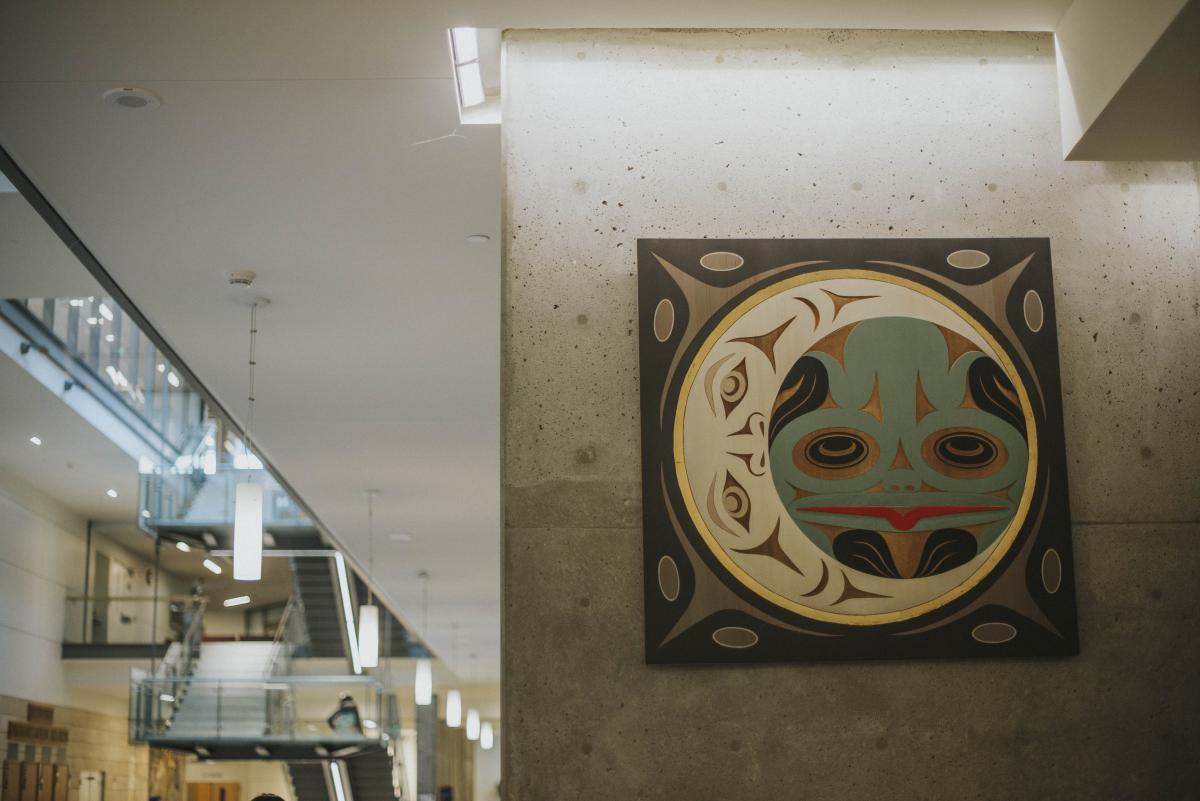
Before diving into her presentation, Crisca Bierwart turned to the audience and asked if we would be willing to introduce ourselves. As we individually took turns stating our names and why we were here, I quickly realized that contrary to my expectations, I was one of the only students present. In fact, most of the audience members were from various local and regional tribes including Ken Workman, a Duwamish tribe council member who is a direct descendant of Chief Sealth.
We were all gathered together to hear Bierwart, an affiliate associate professor of Anthropology at UW, discuss her latest project: a website that maps the public art work of contemporary Coast Salish artists. Audience members also asked critical questions and offered illuminating suggestions on how to amplify Native perspectives, distinguish this site from varying similar projects, and build relationships with the local Native communities. Bierwart hopes that the final product will be used as a resource for those interested in learning more about Native American art, specifically Coast Salish art, and will become an educational tool for Native educators.
I was so engaged in the questions that were raised by community members, I contacted Crisca Bierwart through email after the event to learn more about her project.

Canoe Journey by Marvin Oliver
Why do you think mapping is a powerful tool, especially when highlighting Coast Salish histories and perspectives? What are its limitations, if any?
Mapping reminds the viewer that the land we stand on - here in Seattle and in the surrounding region - is the land and legacy of Coast Salish people. My mapping of the public art by Coast Salish artists is meant as a reminder of the sovereignty of Native American peoples here, and that their cultural expressions have a long history and a long future connected to this region and specific places here. This mapping is also a quite functional tool, aimed at helping a broader public get to see Coast Salish art (with the aid of the map), and also to hear (or read) more of what the artists have to say about their work, via the text pages on the website. Currently many public art works don't have much in the way of captioning, and while there are some existing guides to Native American art works, there is none as comprehensive as this aims to be.
The limitations of mapping are that the mapping tools I am working with are not Coast Salish cultural artifacts. Background maps showing contemporary roads, city names, and municipal boundaries are helpful to a viewer to find sites, but they also foreground the mainstream culture. Coast Salish artists do participate wholly in that mainstream culture, of course, but they also have other ways of representing and it is a challenge for me, working with them, to express connection to place with a finding tool that comes from another cultural way of thinking. Also, connections between places are shown on a map in a geographic way, but not necessarily the way that people connect between places. So the "web" of cultural presence that appears on the map I'm working on intends to imply cultural exchange and connections, but it doesn't show the social picture.
Finally, public art is a representation of only a slice of Coast Salish art-making and a portion of what is created in numerous tribes and communities. Thus, mapping is a reminder that a "general public" only sees a portion of the creativity of Coast Salish artists. A challenge is to communicate how much additional artwork is being done - for expression, for family relations, for healing - not in the "public" eye.
However, public art is important to mapping, I strongly believe, for it shows how Coast Salish arts and artists are being recognized, and it amplifies the expression of artists."
"Mapping reminds the viewer that the land we stand on -- here in Seattle and in the surrounding region -- is the land and legacy of Coast Salish people."
What are some suggestions you received from audience members at the seminar? What has been the general response from Coast Salish artists?
At the colloquium, some audience members encouraged a rethinking of the website and its premises - to better express community contexts, a more complete reference to the range of Coast Salish art (perhaps including more than public art), and amplifying Native perspectives. Some powerful concepts were put forward, including one from Duwamish member Ken Workman, who suggested viewing Duwamish presence as a human community that derives from a sustaining relationship with the land, and also seeing the land and trees as themselves enriched by past generations - not only by their work but by their bodies. S'Klallam artist Roger Fernandes also talks about his people's' relationship with the land coming first, stories emerging over long experience, and expression of those stories and philosophical teachings to follow. It is a exciting challenge to think about including and reflecting such profound thoughts in the website.
Coast Salish artists I have talked with have been enthusiastic about contributing to this site. They all recognize the value it can play in promoting knowledge about the deep Coast Salish legacies, presence and future. Some have even named the value it can play in Native education. Artists have also expressed interest in connecting the artwork with specific sites, their processes of creating public art work, and the experiences and stories that they express in visual arts, although not all works express specific stories. I have not reached all the artists, but this is the general response to date.

The website (above) is still in draft mode, but will display a map of the public art works and a page for each work of art. On the live site, the viewer can scroll down and read more text than it shown here. The text here was written by Marvin Oliver, the artist whose work is shown.
If UW students are looking to learn about more Native American artwork on campus, where should they start?
The Burke Museum offers the largest resource for information on Coast Salish art, and Native artwork more broadly. They frequently host art and storytelling events that are excellent ways to see and hear more cultural information, and their website on Coast Salish art is also a good place to start.
Besides the Burke Museum, there are also works by Coast Salish artists at the HUB, Allen Library, and wəɬəbʔaltxʷ (the Intellectual House). In the HUB, students can see Marvin Oliver's Raven's Journey, and Shaun Peterson's Frog and Moon, North Wind, and Duwamish Salmon. In the Allen Library foyer, there are ravens flying about and a caption in the Lushootseed language that says "ʔuʔəƛ̕cəb ʔə kawqs tiʔəʔ sɬəx̌il dxʷʔal tiʔəʔ ʔalʔal ʔə syəyəhub" -- "Raven Brings Light to this House of Stories." At the wəɬəbʔaltxʷ, the female and male welcome figures were carved by Andrea Wilbur Sigo who is a member of the Squaxin Island Tribe.

Frog and Moon Panel by Shaun Peterson
Top photo: Raven Brings Light by Ron Hilbert, Carl T. Chew, Mare Blocker and J.T. Stewart.
Dr. Bierwart’s project has been generously supported by King County Heritage Program of 4Culture. 4Culture’s seed grant has provided a modest honoraria to the artists who are providing the visual and textual material she is coordinating on the site.